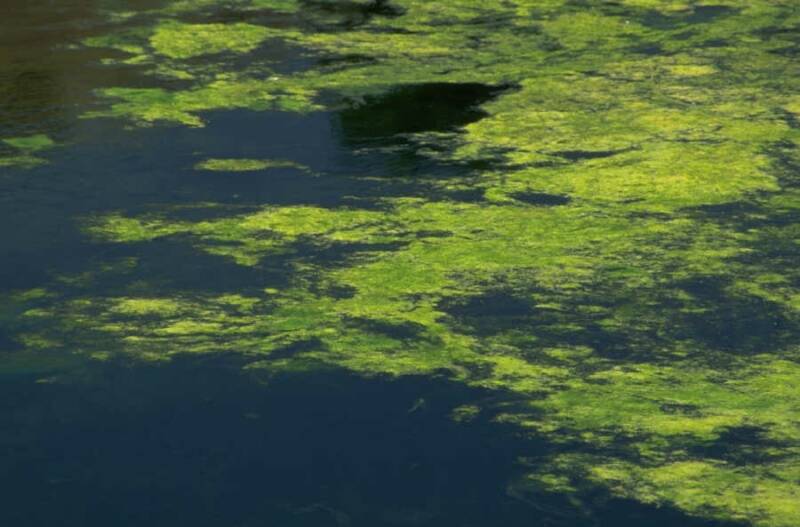ALGAE CONTROL
Algae are tiny plants that bloom and grow in swimming pools if nutrients are present and a sufficient level of free chlorine is not maintained. Below are descriptions of the three most common algae problems in swimming pools.
Green Algae The most common algae in swimming pool floats in water and coats pool surfaces. Left unchecked green algae will very quickly turn the pool water pea green.
Mustard Algae settles on pool walls and causes a slimy yellow film.
Black Algae appears in "buds" or clumps attached to tile grout, corners, steps and pool surfaces.
Solution:
Green Algae - is very susceptible to chemical treatment. Superchlorinate with 10 to 20 ppm chlorine in the evening. Keep the filter running and brush the pool walls and bottom. Periodically check chlorine and maintain above 3 ppm until water clears. Using an algaecide containing quaternary ammonia the next morning will help prevent the return of green algae.
Mustard Algae - is much more resistant to chemical treatment and clings more tightly to pool walls than green algae. Adjust pH and superchlorinate as for green algae then brush diligently. Later vacuum the pool, check chlorine and superchorinate again if necessary. Mustard algae will generally return unless treated with a special mustard algaecide or a copper based algaecide. Algaecide should be added in the morning to treat algae in daylight - its most active period.
Black Algae - is very difficult to get rid of. It can be controlled to some extent by frequent superchlorination and diligent brushing with a stiff brush. Spot treatments can be made by turning off the recirculation pumps and pouring granular chlorine directly on recently brushed spots of white surface pools. Trichlor tablets can also be rubbed on recently brushed areas to spot treat on white pools only. Black algae can usually be controlled with the use of strong algaecides and maintenance of relatively high free chlorine residual, but complete removal of black algae may require draining and cleaning the pool.
Note: Algae blooms are a problem best avoided. Maintaining proper water quality, using a maintenance dose of algaecide and frequent brushing of pool walls will deprive algae of the opportunity to get started.
**********************************************************************************************************************************************************************
MAINTENANCE CONTINUED …
TILE
- CONTACT A POOL TILE CLEANING SERVICE TO CLEAN EVERY ONE TO THREE YEARS
- DO NOT USE A PUMICE STONE TO CLEAN TILE
- IT IS NORMAL TO SEE A CALCIUM BUILD UP AROUND WATER FEATURES AND FALLS
CONCRETE
- COLORED CONCRETE MAY SHOW CALCIUM BUILD UP, CONTACT A CONCRETE PROFESSIONAL FOR TIPS ON CLEANING






